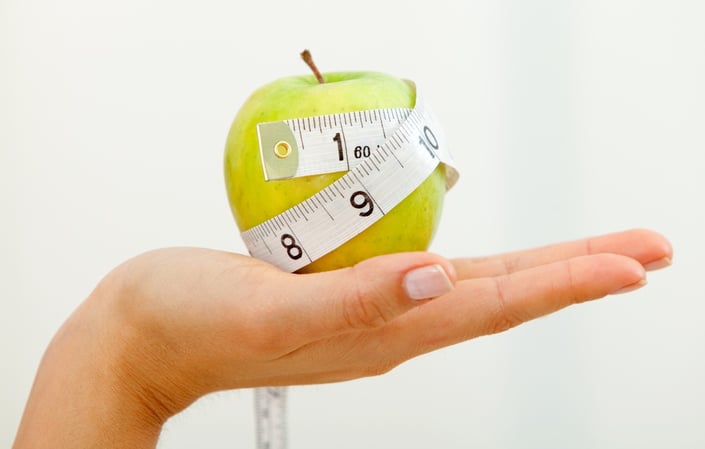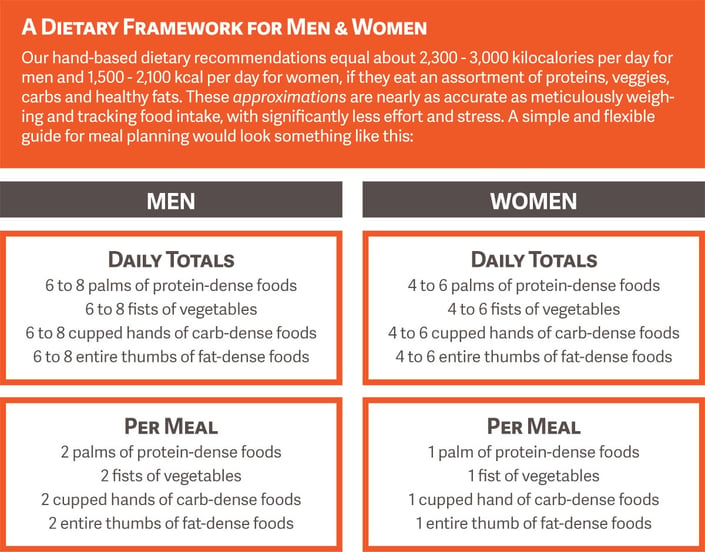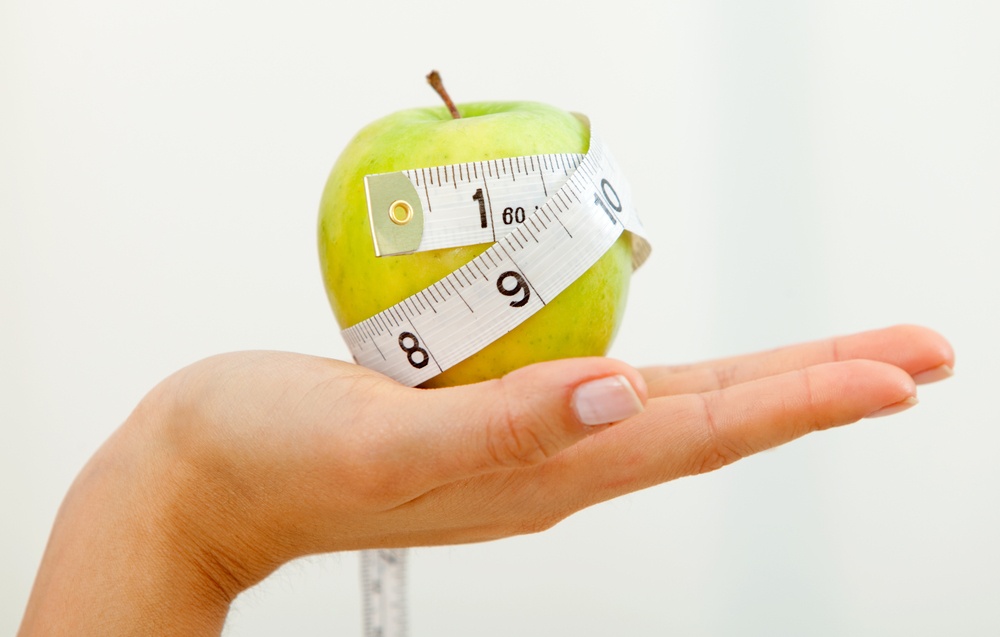Weight loss does not have to be complicated. You can become lean and healthy without following a prescribed meal plan, overworking yourself in the gym or even counting calories.
That doesn’t mean it’s easy. Fat loss - like any life change - often requires trying new things, getting out of comfort zones and swapping old habits for new ones. And when it comes to food portions, size does matter. But you don’t need a calculator, a scale or a calorie-counting app.
When eating becomes overcomplicated, people are more likely to give up and fall back on old habits. That’s simply human nature. Counting calories and weighing portions may become obsessive, cumbersome and is not always accurate. So - it’s a lot of work for only a small gain.
The key is to find ways to help you consistently eat quality foods in appropriate amounts. So, how can you best do that?
A Better Way to Control Portions & Calories
Use a simple method that helps people build an awareness of what they’re eating. It’s easy, it’s portable, and it’s scaled to the size of the individual (and it’s free). All you need are the ability to count to two, and your own hand. Here’s how it works:
- The size of your palm determines your protein portions.
- The size of your fist determines your veggie portions.
- The size of your cupped hand determines your starchy carbohydrate portions.
- The size of your thumb determines your fat portions.
Of course, everybody is a little different. There’s not one “perfect” way of doing things, just as there’s not one “perfect diet” for everyone. But since bigger people tend to have bigger hands and smaller people have smaller hands, your own hand can be a personalized (and portable) measuring device for your food intake.
For protein-dense foods like meat, fish, eggs, cottage cheese and Greek yogurt, legumes and lentils, use a palm-sized serving. This means a serving has the same thickness and diameter as your palm. Each palm-sized serving provides approximately 20 to 30 grams of protein.
For non-starchy colorful vegetables (think broccoli, spinach, salad, carrots, etc.) use a fist-sized serving. Again, a fist-sized portion has the same thickness and diameter as your fist.
For carbohydrate-dense foods - like grains, starches or fruits - use a cupped hand to determine your serving size. Each cupped handful provides approximately 20 to 30 g of carbohydrate.
For fat-dense foods like oils, butters, nuts, seeds, or nut buters use your entire thumb to determine your serving size. A thumb-sized portion is the thickness and entire length of your thumb and each serving provides approximately 7 to 12 g of fat.

The above chart is very general and not for everyone - but is a good place to start. To determine your personal requirement it is suggested that you meet with your ORC nutrition professional.




